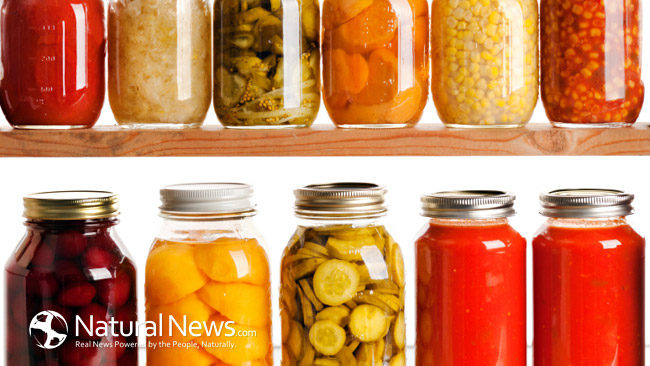In the past, food preservation was part of life, especially for those who lived on farms and were dependent on their own preservation skills to have a year-round source of food. Nowadays we depend on grocery stores and on our own refrigerators for year-round convenience – a convenience which ends abruptly when the power goes out! As winter comes on and such outages are more likely to happen due to inclement weather, it is a good idea to have food put by that does not depend upon refrigeration to keep it from going bad. Below are five great ways to do this.
Canning
This traditional method of food preservation heats food to the point where bacteria is killed off then seals it in airtight jars until it is ready to be eaten. The food of course can be eaten immediately as well, with the exception of pickles which take several weeks before their flavor becomes fully developed. This is a very effective method of food preservation, but be warned: it is labor intensive and, if you are starting from scratch and buying new equipment and cans, it can be pricey as well.
Drying
This is another traditional method to preserve food and generally it requires the least amount of work and is easiest to learn if you are new to all of this. Drying is effective since it removes the moisture from food that bacteria and mold need to reproduce and it is safe to store dried food for long periods of time if necessary. You can use a food dehydrator or the oven and there are even some foods – especially fruits – which lends themselves to being sun-dried.
Fermenting
This process can be similar to that of canning but it doesn’t require an airtight seal but uses a brine instead and so encourages the development of “good” bacteria, similar to the bacteria found in yogurt or kefir. This brine also enables the elimination of bad strains of bacteria or mold, so it is also a safe method of food preservation. One of the most popular fermented foods nowadays is kimchi, a very spicy fermented cabbage condiment that is South Korea’s national dish.
Salt Curing
This is a method of preserving meat which goes back at least to the Middle Ages and is also highly effective since many strains of bacteria cannot live in an environment with a salt concentration of higher than 10%. To cure a meat, it needs to be rubbed all over in salt and sugar, packing it into a heavy dish and allow it to set at a cool temperature until the process is done. However, salt-cured meat does require a good soak in water before use to remove the excess salt.
Charcuterie
Charcuterie starts out similarly to salt curing, but in this method, a finished product is created and there is no need to cook the meat once it has been through this process. One of the best resources on how to do this is Hank Shaw’s blog, Hunter Angler Gardener Cook.
So if you are interested in expanding your gardening or culinary skills, consider trying this preservation methods – they are not only great for storing foods, but can add some incredible new tastes and flavors to your diet.
More Entries by Rosalina
7 Natural Toners for Oily Skin
Top 10 Essential Oils for Healthy Hair
10 Surprising Benefits of Winged Beans for Beauty and Health





